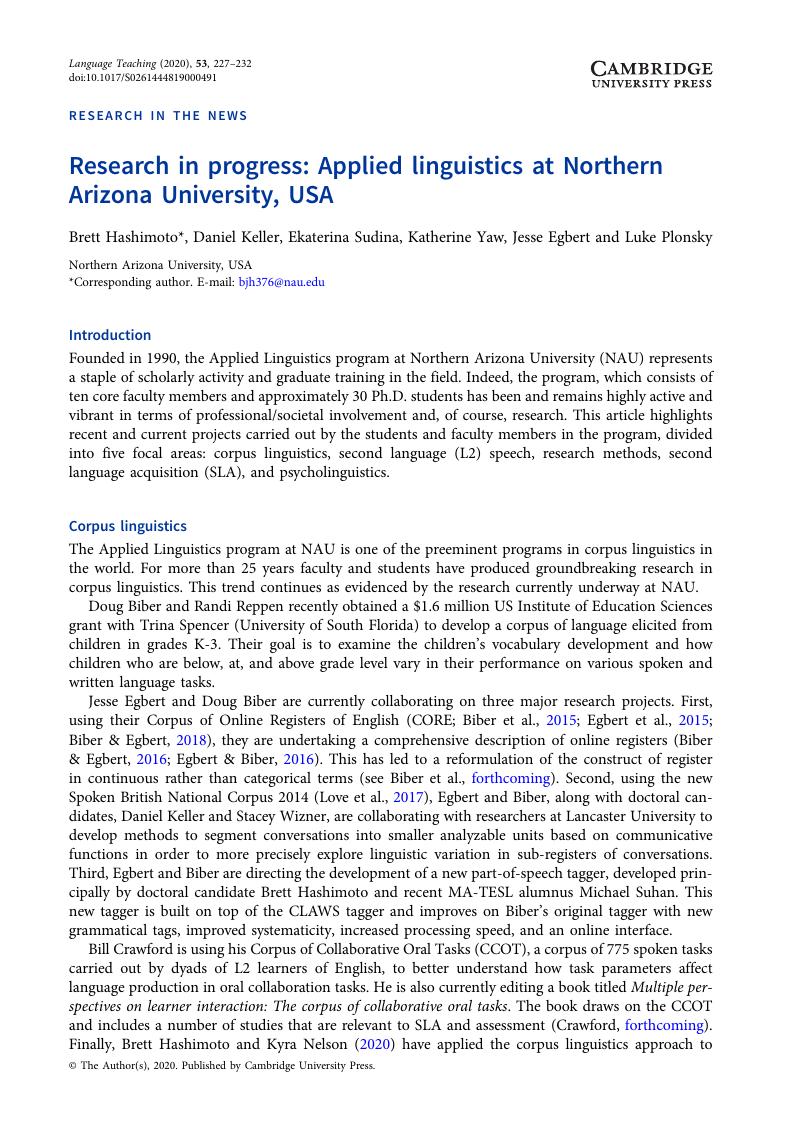Crossref Citations
This article has been cited by the following publications. This list is generated based on data provided by Crossref.
Sudina, Ekaterina
2021.
Study and Scale Quality in Second Language Survey Research, 2009–2019: The Case of Anxiety and Motivation.
Language Learning,
Vol. 71,
Issue. 4,
p.
1149.


